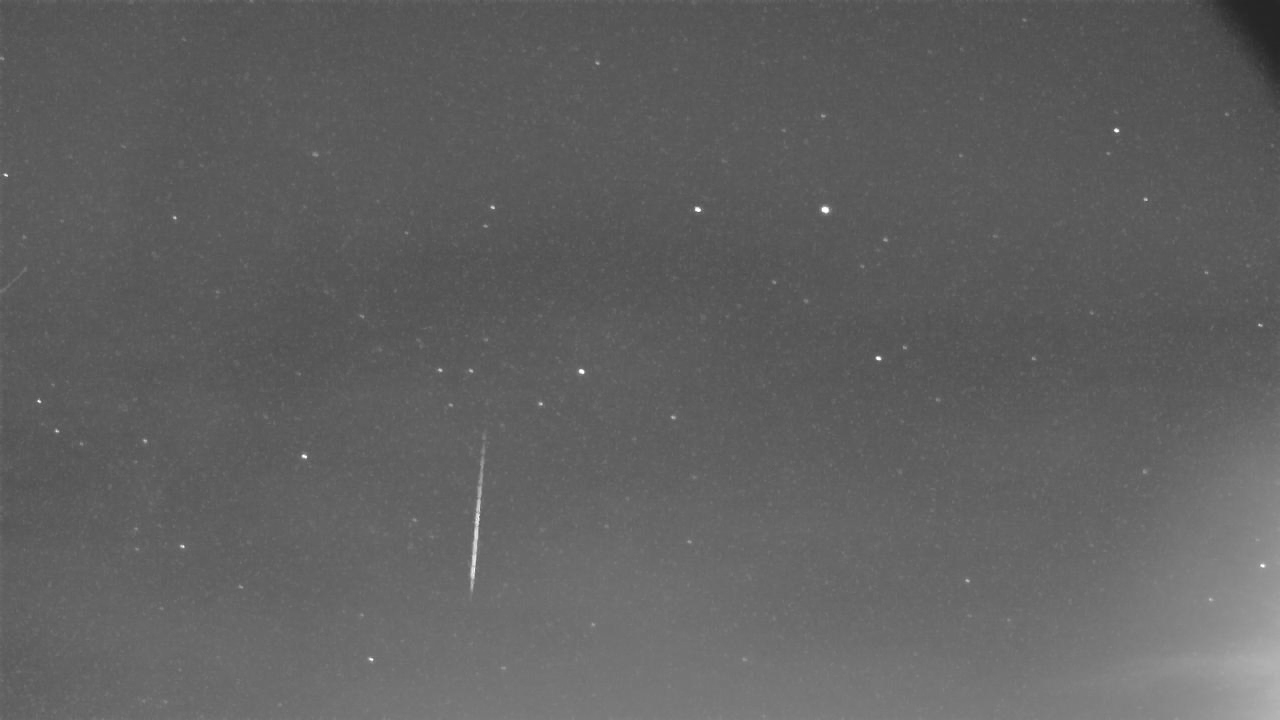Observation by Alex Pratt: Sporadic meteor and alpha Her
Uploaded by
Alex Pratt
Observer
Alex Pratt
Observed
2022 Sep 12 - 20:18
Uploaded
2022 Sep 23 - 22:27
Objects
Meteor
Rasalgethi
Rasalhague
Planetarium overlay
Constellation
Ophiuchus
Field centre
RA: 17h34m
Dec: +05°56'
Position angle: +20°57'
Field size
50° × 29°
Equipment
- IMX291 IP board camera 6mm f/0.95 lens
- Raspberry Pi4
- RMS software
Exposure
25 frames/sec
Location
Leeds, West Yorkshire (Bortle 7)
Target name
Sporadic meteor and alpha Her
Title
Sporadic meteor and alpha Her
About this image
Just a 'run of the mill' mag 1 sporadic meteor passing down through Oph, but it shows an interesting view of the red supergiant Rasalgethi (alpha Her), the brightest star in the field, to the right of upper centre. Visually it is currently about mag 3.5, but here it's brighter than the mag 2.1 blue-white giant Rasalhague (alpha Oph) to its left. This is due to the removal of the IR filter from the 6 mm lens (for meteor work) and the sensitivity of its sensor in red light.
The star images are slightly trailed because each composite RMS image is a stack of 256 x 0.04s frames = 10.24s. This meteor traversed two stacks which I combined to produce this image.
Files associated with this observation
Like this image
Comments
This effect has caught me by surprise a few times when trying to manually calibrate images from my Watec 902H2... what's that bright star that didn't ought to be there?! :-)
Hi Dominic,
Agreed! The Global Meteor Network discussed monitoring variable stars with a simple modification of the RMS code. These ideas haven't developed into any formal project, AFAIK.
In the spirit of George Alcock, some of the star fields in these images 'don't look right' - and a red Mira-type or semi-regular VS stands out from the others.
We discussed this with Nick James and such a setup could be useful for bright nova / transient patrolling.
Indeed. I have been generating frames using the 10s GMN/FTP FITS files that can be used to check for transients but am still missing the automated detection that is crucial for this kind of thing. I've just posted an image of Lyra as an example here. R Lyr is about as bright as Vega.
Copyright of all images and other observations submitted to the BAA remains with the owner of the work.
Reproduction of work by third parties is expressly forbidden without the consent of the copyright
holder. By submitting images to this online gallery, you grant the BAA permission to reproduce them in
any
of our publications.


